Contents
Guide

Other Books by Kim Cameron
Coffin Nails and Corporate Strategies (1982), with Robert H. Miles
Organizational Effectiveness: A Comparison of Multiple Models (1983), with David A. Whetten
Paradox and Transformation: Toward a Theory of Change in Organization and Management (1988), with Robert E. Quinn
Organizational Decline: Conceptual, Empirical, and Normative Foundations (1988), with Robert I. Sutton and David A. Whetten
Positive Organizational Scholarship: Foundations of a New Discipline (2003), with Jane E. Dutton and Robert E. Quinn
Leading with Values: Positivity, Virtues, and High Performance (2006), with Edward D. Hess
Competing Values Leadership: Creating Value in Organizations (2006) with Robert E. Quinn, Jeff DeGraff, and Anjan V. Thakor
Making the Impossible Possible: Leading Extraordinary PerformanceThe Rocky Flats Story (2006), with Marc Lavine
The Virtuous Organization: Insights from Some of the Worlds Leading Management Thinkers (2008), with Charles C. Manz, Karen P. Manz, and Robert D. Marx
Organizational Effectiveness (2010)
Diagnosing and Changing Organizational Culture: Based on the Competing Values Framework (3rd Edition) (2011), with Robert E. Quinn
The Oxford Handbook of Positive Organizational Scholarship (2012) with Gretchen M. Spreitzer
Positive Leadership: Strategies for Extraordinary Performance (2nd Edition) (2012)
Practicing Positive Leadership: Tools and Techniques That Create Extraordinary Results (2013)
Developing Management Skills (10th Edition) (2020), with David A. Whetten
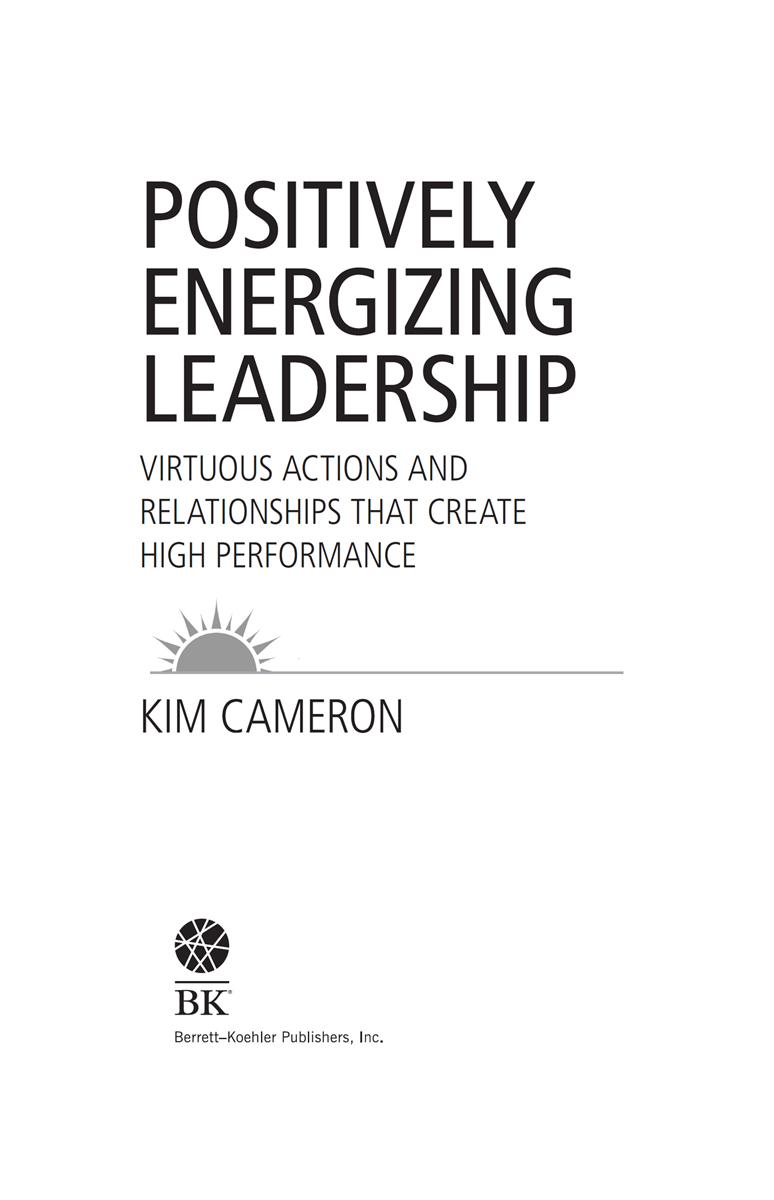
Positively Energizing Leadership
Copyright 2021 by Kim Cameron
All rights reserved. No part of this publication may be reproduced, distributed, or transmitted in any form or by any means, including photocopying, recording, or other electronic or mechanical methods, without the prior written permission of the publisher, except in the case of brief quotations embodied in critical reviews and certain other noncommercial uses permitted by copyright law. For permission requests, write to the publisher, addressed Attention: Permissions Coordinator, at the address below.

| Berrett-Koehler Publishers, Inc.
1333 Broadway, Suite 1000
Oakland, CA 94612-1921
Tel: (510) 817-2277, Fax: (510) 817-2278
www.bkconnection.com |
Ordering information for print editions
Quantity sales. Special discounts are available on quantity purchases by corporations, associations, and others. For details, contact the Special Sales Department at the Berrett-Koehler address above.
Individual sales. Berrett-Koehler publications are available through most bookstores. They can also be ordered directly from Berrett-Koehler: Tel: (800) 929-2929; Fax: (802) 864-7626; www.bkconnection.com
Orders for college textbook/course adoption use. Please contact Berrett-Koehler: Tel: (800) 929-2929; Fax: (802) 864-7626.
Distributed to the U.S. trade and internationally by Penguin Random House Publisher Services.
Berrett-Koehler and the BK logo are registered trademarks of Berrett-Koehler Publishers, Inc.
First Edition
Paperback print edition ISBN 978-1-5230-9383-0
PDF e-book ISBN 978-1-5230-9384-7
IDPF e-book ISBN 978-1-5230-9385-4
Digital audio ISBN 978-1-5230-9387-8
2021-1
Book producer: Westchester Publishing Services
Cover designer: Howie Severson
 CONTENTS
CONTENTS PREFACE
PREFACET his book is about one of the most important factors in accounting for spectacular performance in organizations and their employees: the positive energy displayed by leaders. The book relies on validated scientific evidence to make the case that all individuals are inherently attracted to and flourish in the presence of positive energy. Most importantly, the book provides evidence that leaders virtuous behaviors are tightly linked to their positive energy and to extraordinarily positive performance in their organizations. Virtuous practices on the part of leaders are key in accounting for the highest levels of positive performance.
Practical suggestions are provided in the book for how to assess positive energy, how to develop it, and how to help leaders implement it in order to elevate their organizations performance. The prescriptions offered in the book are also relevant in families, in relationships, in community service, and in classrooms. Thus, not only is positively energizing leadership a major predictor of success in private and public sector organizations, but it is applicable in more personal settings as well. Students who have been exposed to positively energizing leadership, for example, perform significantly better on academic tests as well as experience higher levels of well-being than students not so exposed.
This book is intended to be helpful to leaders in almost any kind of organization, to individuals facing trying times or experiencing difficult challenges, to educators attempting to help their students flourish personally and academically, and to those interested in enhancing their relationships with family and friends. Providing helpful prescriptions as well as the empirical evidence that validates them is an important purpose of this book.
Many individuals have had an important impact on the work cited in this book. I have especially benefited from the expertise of the publications staff at Berrett-Koehler and my friends and editors Steve Piersanti and Jeevan Sivasubramaniam. My colleagues Jane Dutton and Bob Quinn have taught me a great deal and have provided unmeasurable emotional and intellectual support in addition to collaborating in founding the Center for Positive Organizations. Colleague Wayne Baker introduced me to the concept of positive energy, which started me on a research path that helped spawn this book, and colleague Brad Owens played a major role in initiating this research stream. The staff at the Center for Positive Organizations at the University of MichiganAngie Ceely, Betsy Erwin, Hitomi Katsumi, Esther Kyte, Sue Reuhle, Stacey Scimeca, and Katie Trevathanhave set a standard of extraordinary performance that truly exemplifies positively energizing leadership. Most importantly, my wife, Melinda, has been the most positively energizing leader I have ever known and has exemplified virtuous practices every single day for more than 50 years.
INTRODUCTION
Leading through Positive Relational Energy
R ecent events including earthquakes, floods, tornadoes, cyberattacks, ethical lapses, wildfires, and the worldwide COVID-19 pandemic have created a confluence of challenges that most of us have not experienced in our lifetimes. Racial injustice, economic devastation, and loss of life have elevated our collective consciousness regarding what is wrong in our world. Contention, outrage, and violence have become widespread. Extensive economic, emotional, and health effects have changed normal daily activities, relationships, institutions, and even values.





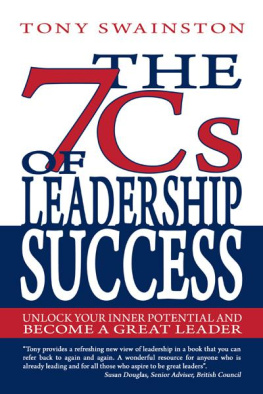

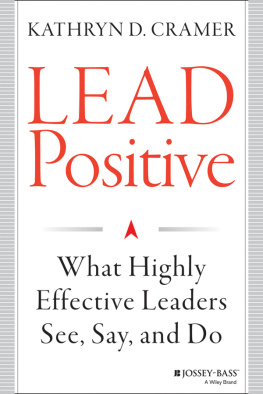
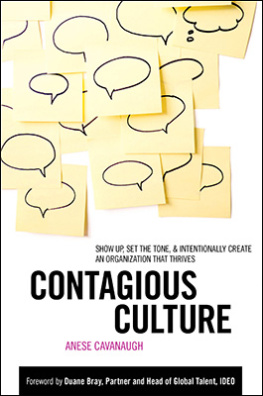
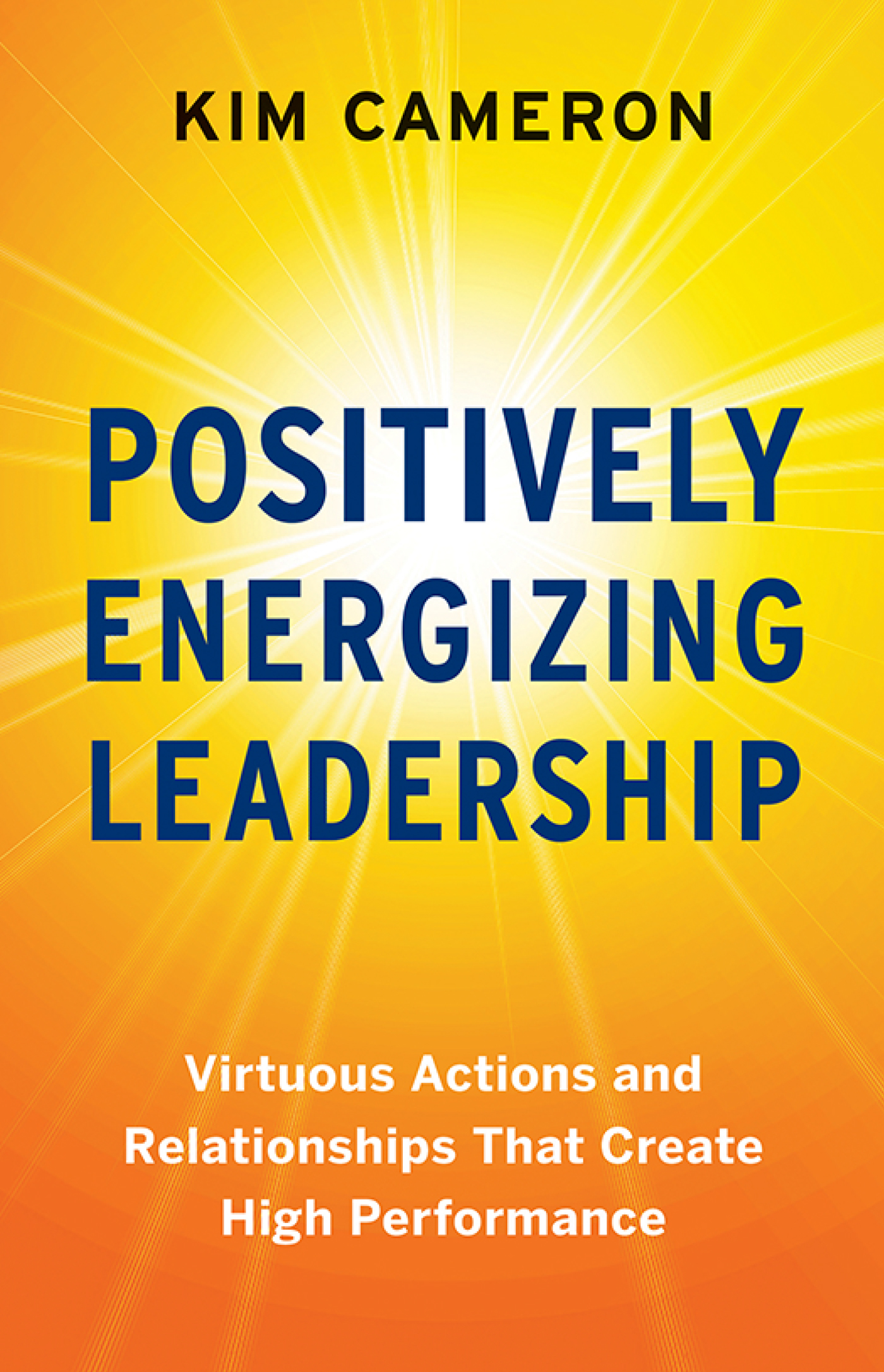



 CONTENTS
CONTENTS